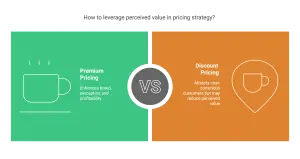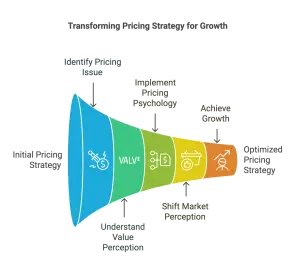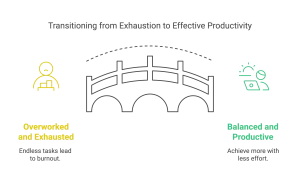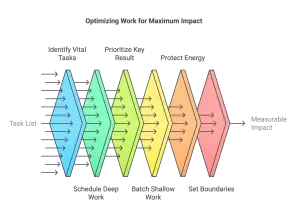“Eat the frog” time management is a popular productivity method that involves tackling the most demanding or unpleasant tasks first thing in the morning. Coined by renowned author and speaker Brian Tracy, this approach has gained wide recognition as an effective way to manage time and increase productivity.
Brian Tracy, a leading authority on personal and professional success, has written several books on time management, including “Eat That Frog! 21 Great Ways to Stop Procrastinating and Get More Done in Less Time.“ His work has influenced many successful people in their approach to time and tasks.
Key Takeaways
- Identify your “frog” – the most difficult task – and tackle it first.
- Prioritize tasks to ensure maximum productivity.
- Develop positive work habits and manage energy levels for improved time management.
Time is a limited resource, and effective time management is crucial for both personal and professional success. It allows individuals to prioritize tasks, complete them efficiently and effectively, and create a sense of accomplishment. By managing time effectively, one can make the most of each day and achieve short-term and long-term goals.
Introduction
Prioritizing tasks, tackling the most difficult one first, developing positive work habits, and managing energy levels are the key elements of “eat the frog” time management. By prioritizing tasks, individuals can focus on the most crucial and impactful tasks first, rather than wasting time on less important tasks. Tackling the most difficult task first allows individuals to overcome procrastination, resulting in a sense of accomplishment and increased productivity. Developing positive work habits, such as avoiding distractions and staying focused, can also improve time management and productivity. Managing energy levels by scheduling tasks during the most productive time of the day can also have a positive impact.
Incorporating “eat the frog” time management into daily life involves:
- Identifying the most challenging task (or “frog”)
- Prioritizing tasks
- Scheduling time for the “frog”
- Breaking it down into smaller tasks
- Using time management tools
Additionally, staying focused and avoiding distractions is crucial for effective time management.
Some additional time management tips include:
- Scheduling tasks during the most productive time of the day
- Chunking time to focus on specific tasks
- Tracking time to identify areas to improve
- Taking breaks and resting to maintain energy levels
- Prioritizing self-care
Some expert tips for successful time management include Cal Newport’s “Deep Work” approach, which focuses on eliminating distractions and creating uninterrupted periods of work, The Eisenhower Matrix popularized by Stephen Covey, and Brian Tracy’s “Eat That Frog” method. Incorporating time management techniques into daily life, such as prioritizing tasks and managing energy levels, can also lead to successful time management.
What is Eat the Frog Time Management?
What is the concept of Eat the Frog Time Management? It is a productivity strategy that focuses on tackling your most challenging or important task first thing in the morning. The idea behind it is that by starting your day with the most challenging task, everything else will seem easier in comparison. This approach helps boost productivity and motivation for the rest of the day, while also preventing procrastination and ensuring progress towards your goals.
Who is Brian Tracy and What is His Contribution to Time Management?
Brian Tracy is a well-known author, speaker, and expert in time management. He has made remarkable contributions to the field through his books, seminars, and coaching programs. Tracy’s teachings revolve around setting effective goals, prioritizing tasks, and utilizing productivity techniques. His strategies have proven to be highly beneficial for individuals and businesses in achieving their objectives, managing their time efficiently, and increasing productivity. Thanks to Tracy’s expertise and practical advice, countless individuals have been empowered to take control of their time and achieve success.
His books, including the popular “Eat That Frog!”, have become go-to resources for those looking to improve their time management skills.
Tracy’s professional journey began as a salesperson, and he quickly rose through the ranks to become a successful entrepreneur. Inspired by his own experiences, he delved into the study of time management and productivity, eventually becoming a leading authority in the field. Tracy’s contributions have had a significant impact on individuals and organizations worldwide, aiding them in achieving their goals and reaching their full potential. Through his books, seminars, and training programs, Tracy continues to inspire and educate people on the crucial role of effective time management.
Why is Time Management Important?
Efficient time management is essential for both personal and professional success. It enables individuals to effectively prioritize tasks, meet deadlines, and reach their goals. By effectively managing their time, individuals can increase productivity, reduce stress, and achieve a better work-life balance. It also allows for the wise allocation of resources, better decision-making, and avoidance of procrastination.
Effective time management involves:
- Setting clear goals
- Prioritizing tasks
- Creating schedules
- Avoiding distractions
- Delegating when necessary
Ultimately, mastering time management skills empowers individuals to make the most of their time and achieve success in all areas of life.
How Can Time Management Improve Productivity?
Effective time management can significantly enhance productivity. Here are some steps to improve productivity through time management:
- Set clear goals and prioritize tasks based on importance and urgency.
- Create a schedule or to-do list to stay organized and focused.
- Break down large tasks into smaller, manageable steps to avoid feeling overwhelmed.
- Utilize time management tools, such as calendars or productivity apps, to stay on track.
- Eliminate distractions and practice focus techniques to maintain concentration.
By implementing these strategies, individuals can optimize their time and increase productivity.
What Are the Key Elements of Eat the Frog Time Management?
In the world of time management, the “eat the frog” approach has gained popularity for its effectiveness in increasing productivity and reducing procrastination. But what exactly are the key elements of this approach? In this section, we will break down the components of eat the frog time management. From prioritizing tasks to developing positive work habits, we will explore how this method helps individuals tackle their to-do lists and manage their energy levels for maximum efficiency. So let’s dive in and discover the key elements of eat the frog time management.
1. Prioritization of Tasks
Prioritizing tasks is a crucial aspect of effective time management. Here are some steps to efficiently prioritize tasks:
- Make a list of all your tasks.
- Assess the importance and urgency of each task.
- Identify the tasks that align with your goals and have high priority.
- Consider deadlines and time-sensitive tasks.
- Rank the tasks based on their priority level.
- Allocate time and resources accordingly, giving priority to the most important tasks.
- Regularly review and adjust your task priorities as needed.
2. Tackling the Most Difficult Task First
The Eat the Frog time management technique emphasizes tackling the most challenging task first. This approach prioritizes completing the most difficult task early in the day, leading to increased productivity and reduced procrastination.
To incorporate this technique into your daily life, follow these steps:
- Identify your most difficult task.
- Prioritize your tasks based on importance and urgency.
- Schedule dedicated time to focus on your most difficult task.
- Break down the task into smaller, more manageable steps.
- Utilize time management tools, such as timers or task lists, to stay organized.
- Stay focused and minimize distractions, such as turning off notifications or finding a quiet workspace.
By following these steps, you can successfully tackle your most difficult task first and reap the benefits of improved productivity and a sense of accomplishment. Remember, starting with the hardest task sets the tone for a productive day.
Because let’s face it, procrastination is a bad habit and no amount of positive thinking will make that frog any easier to eat.
3. Developing Positive Work Habits
Developing positive work habits is crucial for effective time management. Here are some steps to cultivate these habits:
- Set Clear Goals: Define what you want to achieve and break it down into smaller, actionable tasks.
- Create a Routine: Establish a consistent schedule that includes dedicated time for important tasks.
- Eliminate Procrastination: Overcome the temptation to delay tasks by setting deadlines and using techniques like the Pomodoro Technique.
- Prioritize Self-Care: Take breaks, exercise, and get enough sleep to maintain energy and focus.
- Manage Distractions: Minimize interruptions by turning off notifications, organizing your workspace, and using productivity tools.
- Practice Time Blocking: Allocate specific time blocks for different activities to enhance focus and productivity.
- Review and Reflect: Regularly assess your progress, identify areas for improvement, and adjust your habits accordingly.
Because let’s face it, without caffeine and snacks, we’re all just frogs struggling to eat ourselves.
4. Managing Energy Levels
Managing energy levels is a crucial aspect of effective time management. Here are some steps to help you manage your energy levels throughout the day:
- Ensure adequate sleep: Get enough restorative sleep to recharge your energy levels.
- Eat balanced meals: Consume nutritious meals with a mix of carbohydrates, proteins, and healthy fats to maintain steady energy levels.
- Stay hydrated: Drink enough water throughout the day to maintain hydration and boost energy.
- Take regular breaks: Take short breaks every hour or two to recharge and refocus.
- Engage in physical activity: Incorporate exercise or movement breaks to increase blood flow and energy levels.
- Avoid energy-draining habits: Minimize activities like excessive screen time, negative thinking, and multitasking that drain energy.
- Manage stress: Practice stress management techniques like deep breathing, meditation, or mindfulness to reduce fatigue and boost energy.
No more procrastination or hopping around tasks like a frog, just pure productivity with Eat the Frog time management.
What Are the Benefits of Eat the Frog Time Management?
In today’s fast-paced world, effective time management is crucial for success. One popular approach is known as “eating the frog,” where you tackle your most challenging task first thing in the morning. But what are the benefits of this time management method? In this section, we will explore how eating the frog can lead to increased productivity, a sense of accomplishment, and improved mental health. These benefits make it a valuable tool for anyone looking to improve their time management skills.
1. Increased Productivity
Increased productivity is one of the main advantages of implementing Eat the Frog time management. Here are some steps to boost productivity:
- Prioritize tasks: Identify the most important tasks and focus on completing them first.
- Break tasks down: Divide larger tasks into smaller, more manageable subtasks.
- Set deadlines: Establish realistic deadlines to stay motivated and on track.
- Eliminate distractions: Minimize interruptions by creating a distraction-free work environment.
- Use time management tools: Utilize apps or digital calendars to organize and track your tasks.
Pro-tip: Take regular breaks to maintain focus and prevent burnout, as short breaks can actually improve productivity.
You’ll feel like a champion after conquering your biggest, ugliest task with Eat the Frog time management.
2. Sense of Accomplishment
Achieving a sense of accomplishment is one of the key benefits of following the Eat the Frog time management method. Here are steps to incorporate it into your daily life:
- Identify your most challenging task or “frog” that needs to be tackled.
- Prioritize your tasks based on urgency and importance, keeping in mind the sense of accomplishment you will feel once they are completed.
- Schedule dedicated time for your “frog” when you are most productive, ensuring that you will be able to successfully tackle it.
- Break down your “frog” into smaller, manageable tasks to make it less overwhelming and increase your sense of accomplishment as you complete each one.
- Utilize time management tools such as calendars, planners, or apps to stay organized and on track with your tasks.
- Stay focused on your task and avoid distractions to maintain productivity and achieve a sense of accomplishment by completing your “frog”.
3. Improved Mental Health
Improving mental health is one of the key benefits of incorporating Eat the Frog time management into your daily life. Here are a few steps you can take to enhance your mental well-being:
- Practice mindfulness and meditation to reduce stress and improve focus.
- Take regular breaks to rest and recharge your mind.
- Engage in physical exercise to release endorphins and boost mood, contributing to improved mental health.
- Set realistic goals and celebrate small achievements to maintain motivation and further enhance mental well-being.
- Establish boundaries between work and personal life to prevent burnout and prioritize mental health.
Get your frog-slaying skills on point and conquer your daily tasks with the power of Eat the Frog Time Management.
How Can You Incorporate Eat the Frog Time Management into Your Daily Life?
Are you constantly struggling to manage your time effectively? The “eat the frog” technique might be the solution for you. This unique approach to time management focuses on tackling the most challenging or unpleasant task first, leaving you with a sense of accomplishment and more time for other tasks. In this section, we’ll discuss six practical ways to incorporate the “eat the frog” method into your daily life, so you can become a more efficient and productive individual.
1. Identify Your “Frog”
Identifying your “frog” is a crucial step in implementing the Eat the Frog time management technique. This involves identifying the most challenging or important task that you need to complete. Here are the steps to identify your “frog”:
- Reflect on your goals and priorities to determine which task is essential for your success.
- Evaluate the tasks on your to-do list and identify the one that requires the most effort, time, or mental energy.
- Consider the consequences of not completing each task and prioritize accordingly.
- Take into account any deadlines or time constraints associated with each task.
- Listen to your intuition and choose the task that you have been avoiding or procrastinating on.
By identifying your “frog,” you can focus your time and energy on tackling the most significant task and achieve greater productivity and success.
2. Prioritize Your Tasks
To effectively prioritize your tasks, follow these steps:
- Create a comprehensive list of all your tasks.
- Evaluate the urgency and importance of each task.
- Identify the tasks that align with your goals and objectives.
- Rank the tasks based on their priority level.
- Break down complex tasks into smaller, manageable subtasks.
- Create a schedule or to-do list to allocate time for each task.
- Begin with the highest priority task and focus on completing it before moving on to the next one.
- Regularly reassess and adjust your priorities as needed.
Prioritizing your tasks allows you to focus on the most important and urgent ones first, leading to increased productivity and a sense of accomplishment. It is important to stay organized and be flexible in adapting to changes in priorities.
Don’t hop around it, schedule time for your ‘frog’ and get it over with.
3. Schedule Time for Your “Frog”
Scheduling time for your “frog,” or the most challenging task, is a crucial step in implementing the Eat the Frog time management technique. Here are some steps to help you effectively schedule time for your “frog”:
- Identify your “frog” by determining the task that you tend to procrastinate on or find most challenging.
- Prioritize your tasks by organizing them based on urgency and importance.
- Block off a specific time slot in your calendar to dedicate to your “frog”.
- Break down your “frog” into smaller tasks to make it more manageable and less overwhelming.
- Utilize time management tools, such as timers or task management apps, to stay on track and monitor your progress.
- Create a conducive work environment and minimize interruptions to stay focused and avoid distractions.
By following these steps, you can effectively schedule time for your “frog” and tackle your most challenging tasks with greater efficiency and productivity. Remember to stay committed to your schedule and make adjustments as needed to maintain a consistent workflow.
4. Break Down Your “Frog” into Smaller Tasks
Breaking down your “frog” into smaller tasks is a crucial step in Eat the Frog time management. This technique helps to break down daunting tasks into more manageable and less overwhelming ones.
Here is a list of steps to follow in order to break down your “frog” into smaller tasks:
- Identify the main goal or task that feels overwhelming.
- Divide the task into smaller, more achievable sub-tasks.
- Create a timeline or schedule for completing each sub-task.
- Prioritize the sub-tasks based on urgency and importance.
- Focus on completing one sub-task at a time, celebrating each small accomplishment.
By breaking down your “frog” into smaller tasks, you can make progress more easily and stay motivated throughout the process.
5. Use Time Management Tools
To effectively incorporate eat the frog time management into your daily life, it’s crucial to utilize time management tools. These tools can help you stay organized, prioritize tasks, and track your progress. Here are some steps to follow:
- Identify the right tools: Look for tools that align with your preferences and needs. Options include digital apps like Trello or Asana, or traditional tools like planners and calendars.
- Set up the tools: Customize the tools according to your workflow and priorities. Create different categories or labels for tasks, deadlines, and reminders.
- Input your tasks: Enter your tasks into the time management tool, making sure to include all the details and deadlines. Categorize them based on importance and urgency.
- Allocate time: Assign specific time slots for each task, considering your energy levels and availability. Be realistic about how much time each task will take.
- Track your progress: Regularly update and review your time management tools to monitor your progress. Check off completed tasks and make adjustments as needed.
Time management tools have been used for centuries to enhance productivity and organization. Ancient Egyptians used sundials and water clocks to measure time and plan their activities. In the 19th century, pocket watches became popular tools for time management. Today, digital tools and apps have revolutionized the way we manage our time, providing convenience, flexibility, and efficiency. From simple to-do lists to sophisticated project management software, these tools have become essential in the modern world, helping individuals and businesses optimize their time and achieve their goals.
If only my distractions were as easy to avoid as eating a frog.
6. Stay Focused and Avoid Distractions
Staying focused and avoiding distractions is crucial for effective time management. Here are some steps to help you stay on track:
- Eliminate Digital Distractions: Turn off notifications and put your phone on silent mode to minimize interruptions.
- Create a Dedicated Workspace: Find a quiet area where you can focus solely on your tasks without distractions.
- Set Clear Goals and Prioritize: Define your objectives and prioritize tasks to stay focused on what’s most important.
- Practice Time Blocking: Allocate specific blocks of time for different tasks to maintain focus and avoid multitasking.
- Take Short Breaks: Incorporate short breaks between tasks to rest and recharge, but be mindful of not getting carried away.
Schedule tasks during your most productive time and avoid procrastination, unless your frog is a procrastination task – then you’re just being efficient.
What Are Some Additional Time Management Tips?
In addition to the “eat the frog” method, there are other time management tips that can help you maximize your productivity and efficiency. One helpful tip is to schedule your most important tasks during your most productive time of day. This will ensure that you are focused and energized when tackling your most challenging tasks. Let’s explore this technique further and discover other useful tips for effective time management.
1. Schedule Tasks During Your Most Productive Time
Scheduling tasks during your most productive time is crucial for effective time management.
- Identify your most productive time: Determine when you feel most alert, focused, and energized.
- Prioritize tasks accordingly: Reserve high-priority and challenging tasks for your peak productivity hours.
- Create a schedule: Block out dedicated time slots during your peak productivity periods for important tasks.
- Eliminate distractions: Minimize interruptions and distractions during your scheduled productive time.
- Take breaks: Remember to incorporate short breaks to recharge and maintain focus.
By aligning your most demanding tasks with your peak productivity, you can optimize your efficiency and achieve better results.
Frequently Asked Questions
What is the “Eat The Frog” technique?
The “Eat The Frog” technique is a time management strategy based on a quote by Mark Twain. It involves tackling the most difficult and important task first thing in the morning, in order to reduce procrastination and increase productivity.
How does the “Eat The Frog” technique work?
To use the “Eat The Frog” technique, one must identify their biggest priorities and most dreaded tasks, which are referred to as “frogs.” These tasks are then completed first thing in the morning, allowing for a sense of accomplishment and reducing stress for the rest of the day.
Can any task be considered a “frog” in the “Eat The Frog” technique?
Yes, any task that causes procrastination can be considered a “frog” in this technique. However, some tasks are more likely to be seen as “frogs” due to their time-consuming, difficult, or boring nature.
Is the “Eat The Frog” technique effective for all types of tasks?
Yes, this technique can be applied to any type of task, whether it is work-related or personal. By completing the most difficult tasks first, individuals can build momentum and manage their daily schedule more effectively.
How does the “Eat The Frog” technique help with time management?
The “Eat The Frog” technique helps individuals prioritize and complete their biggest and most important tasks, allowing for constant progress towards their goals. This technique is especially useful for those who struggle with prioritizing and managing their time.
Can the “Eat The Frog” technique be used in conjunction with other productivity methods?
Yes, the “Eat The Frog” technique can be combined with other productivity techniques, such as time blocking or the pomodoro technique. This method can also be used as a standalone productivity hack to achieve more in a shorter time span.





